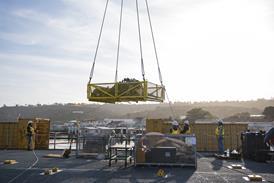Chris Jasper/LONDON
The aviation insurance industry is becoming convinced that the headlong fall in premiums may be poised to hit bottom or even begin a slow recovery, with the market's massive over-capacity also set to be reduced as part of the same process.
Since premiums last hit a peak in 1995, they have suffered a sharp year-on-year fall, to the point that the revenues they provide have been far exceeded by outgoings in terms of claim payments made to airlines.
Aviation insurance has never operated on the basis of a simple revenue versus cost equation, however, with the vast bulk of the industry's profits being derived not from premiums but from the investment of the huge reservoir of cash that they represent.
Returns on these asset portfolios have traditionally managed to keep the sector buoyant despite falling premiums, but profits are being squeezed, while at the same time the reinsurance market has begun to shrink - and with it the industry's room for manoeuvre.
As the bottom line begins to suffer, many in the sector reason, the decline in premium income levels must soon grind to a halt and ultimately reverse. Before that reversal, the industry's over-capacity should also be addressed as those who British Aviation Insurance Group managing director Tony Medniuk calls "the walking wounded" begin to bail out.
Complicating the issue, however, is the emerging consensus that premiums must stop their fall soon - a growing realisation that may cause some of the wounded "to hang on in there", concedes Medniuk.
"I think premiums will turn in 1999 - not because I say so, but because they must," he adds. "Some of the dynamics are beginning to suggest that that is the case."
Addressing the key areas of exposures (liabilities) and losses, he says: "If we take these two factors together we can't sustainably go forward with the current level of pricing. So the challenge is not to put prices up but to redistribute them equitably among the airline industry. That that will happen is not in doubt."
The latest quarterly report from the AON reinsurance group concludes that gross capacity (before reinsurance) stands at around 250%, and while Medniuk believes the figure may be closer to 200%, he acknowledges that the level is still far removed from the optimum of 150-160%. Medniuk regards retained - or net capacity - as "the real driver", but will not speculate on what current levels might be.
The UK Aviation Insurance Offices' Association (AIOA) annual report has meanwhile described the 1998 aviation insurance market as "disappointing in the extreme".
The aerospace product liability and space sectors also suffer from over-capacity, with the latter niche market also buffeted by an unexpectedly high number of in-orbit satellite failures which the AIOA report says "had the essential ingredients of a horror movie". Sources within the industry say that if this trend continues the ground rules for the space market may have to be changed.
For the year, says AON, known airline losses totalled $1,543 million, including aircraft hull and liability losses, but excluding hull war. To this can be added a $295 million provision for attrition.
The same company estimates a 1998 premium income of $980 million for airlines and $360 for product liability cover.
Aviation insurers have been preoccupied with the Millennium Bug, and have introduced formal "questionnaire and policy exclusion clauses" that require operators to fulfil certain obligations before cover beyond this year will be granted.
Source: Flight International























